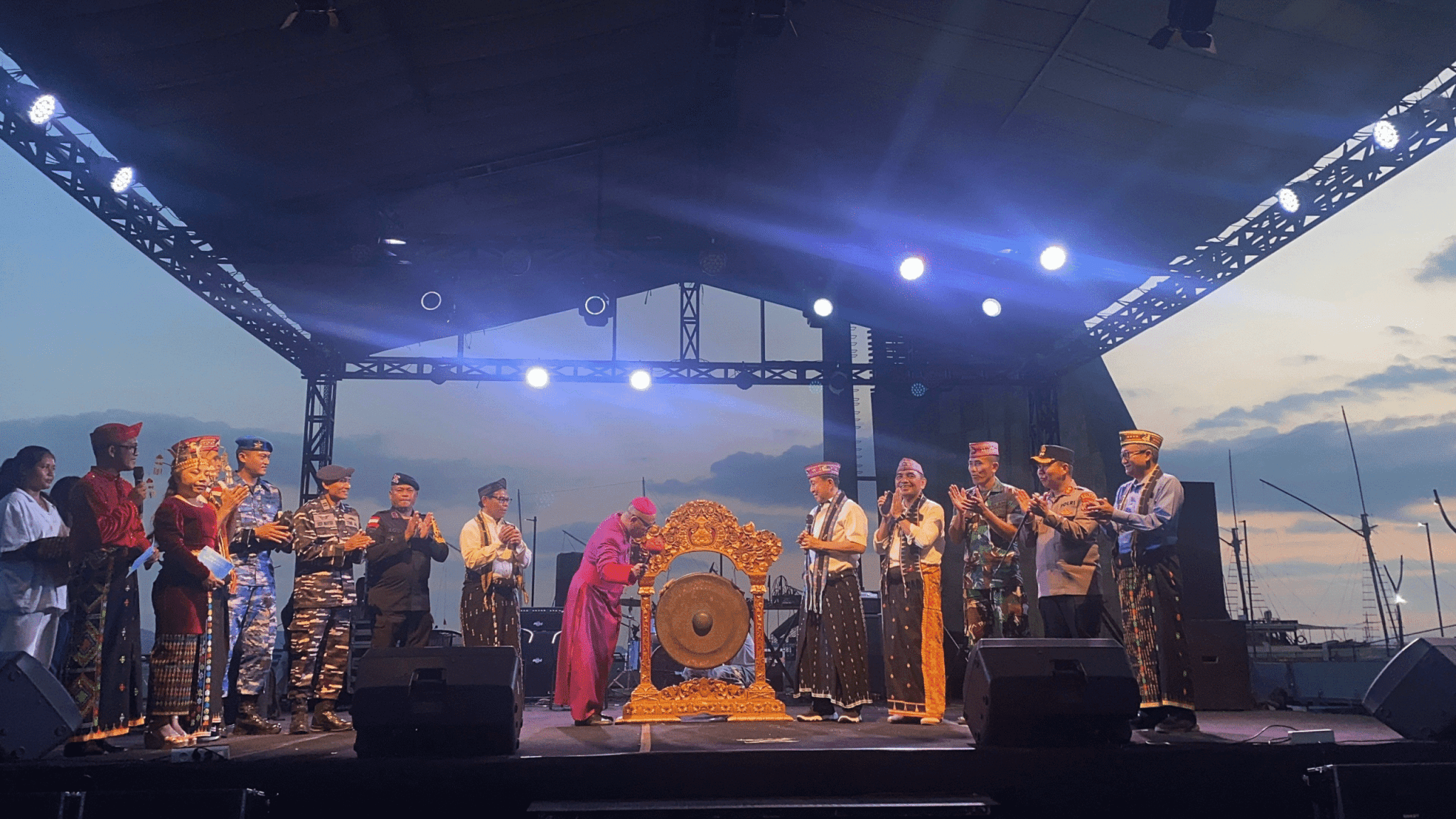
KBRN, West Manggarai – The Golo Koe Festival 2025 officially takes place from August 10–15 at the Maria Waterfront in Labuan Bajo, West Manggarai, East Nusa Tenggara (NTT).
This event blends culture, spirituality, and tourism rooted in local values under the spirit of unity and sustainability.
This year’s theme is “Weaving Nationality through Sustainable, Synodal, and Inclusive Tourism.”
Deputy Regent of West Manggarai, Yulianus Weng, emphasized that the festival is not merely a cultural agenda, but also a space for social, economic, and spiritual encounters.
“Our three pillars of development are the cultivation of maritime life, the strengthening of faith and local culture, and the development of tolerance and harmony,” said Yulianus.
He stated that the Golo Koe Festival belongs to all the people of West Manggarai.
Yulianus added that the festival is part of a strategy for developing tourism based on local culture. Tourists are invited to directly experience the community’s way of life through art, culinary traditions, and traditional rituals.
“This festival provides direct benefits to entrepreneurs, artisans, farmers, fishermen, and local artists,” he explained.
He encouraged the community to take advantage of this moment creatively while preserving the signature hospitality of West Manggarai.
The Bishop of Labuan Bajo, Mgr. Maksimus Regus, reminded everyone of the importance of maintaining a balance between tourism and environmental preservation. According to him, sustainability principles must be the foundation in managing super-priority destinations like Labuan Bajo.
“The beauty of Labuan Bajo is a gift from God that must be managed wisely, not merely exploited for profit,” said Mgr. Maksimus.
He described the Golo Koe Festival as a counter-narrative to the dangers of overexploitation.
Since its inaugural edition four years ago, the Golo Koe Festival has embraced a multi-perspective approach. Its programs cover spirituality, culture, economy, and cross-community solidarity.
This year’s festival features artistic performances, cultural exhibitions, and interactive activities for visitors. It also serves as a platform for collaboration between the government, the community, and tourism stakeholders to maintain harmony between people, nature, and cultural heritage.
Source: RRI.co.id